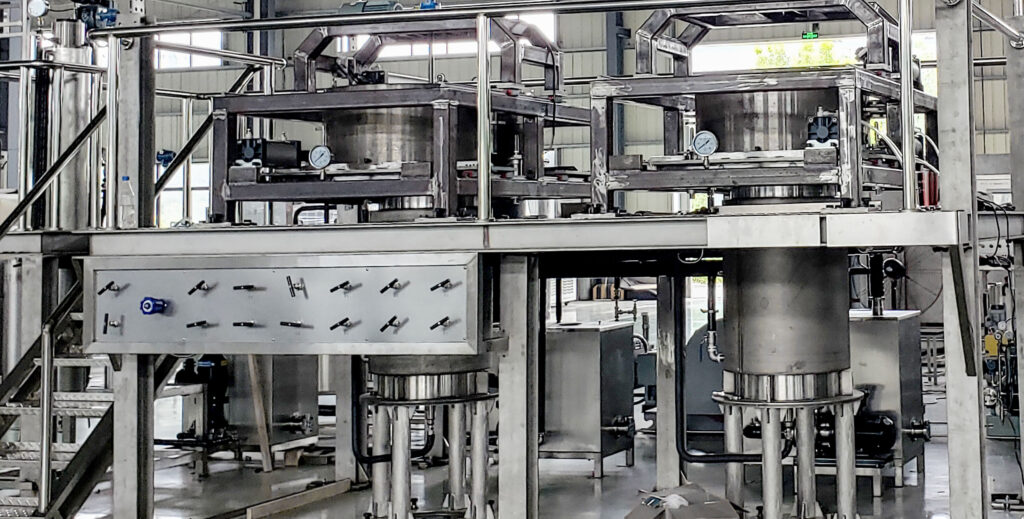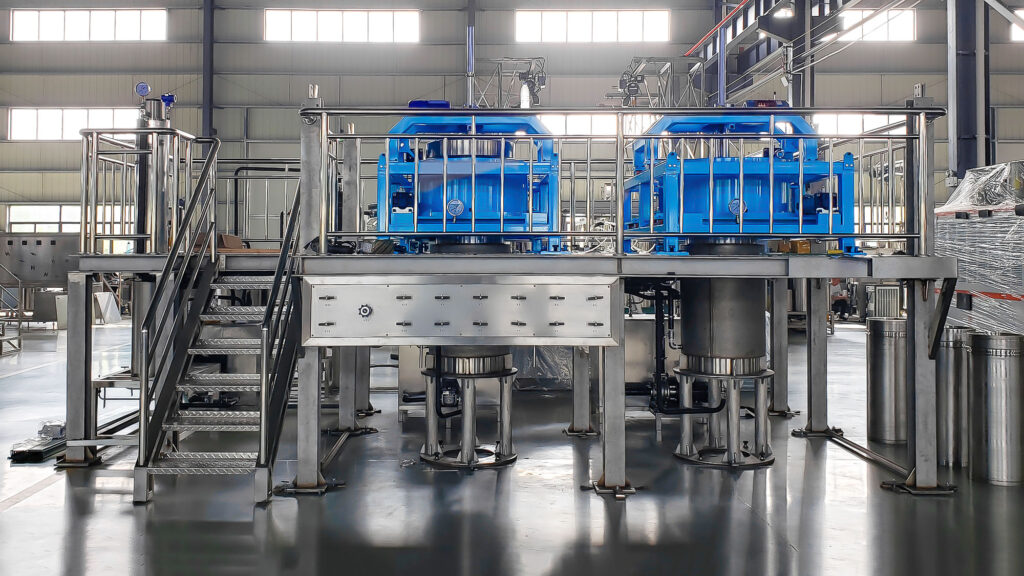
Over 30 years of design and production of supercritical CO₂ Drying Machine
Supercritical Fluid Drying Equipment
A Clean and Efficient Drying Technology for High-Value Materials
Supercritical CO2 drying is an advanced and eco-friendly technology that uses carbon dioxide in its supercritical state to remove moisture from sensitive materials. It is widely applied in aerogels, pharmaceuticals, food, and biomaterials due to its ability to preserve structure and avoid high-temperature damage.
What is Supercritical CO2 Drying?
Supercritical drying uses CO₂ above its critical point (31.1°C and 7.38 MPa), where it behaves like both gas and liquid. It can penetrate materials and dissolve solvents or moisture, then exit without leaving residues or damaging delicate structures.
What is supercritical drying? [Read More]

Advantages of Supercritical CO2 Drying
- Low-temperature drying: Ideal for heat-sensitive substances
- No surface tension: Prevents structural collapse (e.g., aerogels)
- Safe and non-toxic: Suitable for food and pharmaceuticals
- CO2 is recyclable: Reduces operational costs and emissions
Main Applications
- Aerogels – Maintain nano-porous structure
- Pharmaceuticals – Dry bioactive compounds without degradation
- Food products – Preserve flavor, color, and nutrients
- Biomaterials – Dry fragile biological scaffolds
Working Principle
The process starts with solvent exchange (e.g., water to ethanol), then supercritical CO₂ replaces the ethanol. As CO2 leaves, it carries away moisture/solvent without phase change damage. The structure of the material remains intact.
System Components
- Drying Vessel
- CO2 Supply Unit
- Heating & Cooling Modules
- Separation & Recovery Units
- Control System
Typical Technical Parameters
| Parameter | Value |
|---|---|
| Working Pressure | ≤ 30 MPa |
| Temperature | 35°C – 60°C |
| Drying Vessel | 5L – 100L (可定制) |
| CO₂ Flow Rate | 5 – 50 kg/h |
| CO₂ Recovery | ≥ 85% |
Comparison with Traditional Drying
| Feature | Supercritical Drying | Freeze-Drying | Vacuum Drying |
|---|---|---|---|
| Temperature | Low | Very Low | Medium |
| Structural Protection | Excellent | Good | Average |
| Drying Time | Moderate | Long | Short |
| Energy Consumption | Medium | High | Medium |
Case: Supercritical CO2 Drying of Silica Aerogels: Process, Parameters, and Equipment
Supercritical CO2 drying is a key technology for producing high-quality silica aerogels. It allows solvent to be removed from a gel matrix without collapsing the porous structure. This process ensures low shrinkage and high porosity, which are critical for applications in insulation, catalysis, and aerospace.
Step-by-Step Process of Supercritical CO2 Drying
1. Sol-Gel Preparation
The process begins with the hydrolysis and condensation of a silicon precursor such as TEOS (tetraethyl orthosilicate) or TMOS. This forms a wet gel (alcogel) with ethanol or water trapped in its porous network.
2. Solvent Exchange
The water in the alcogel is gradually replaced with ethanol to prevent capillary stress during drying. This step often involves multiple soaking and draining cycles.
3. CO2 Exchange
Liquid CO2 is circulated through the alcogel to replace the ethanol. This step is repeated multiple times to ensure complete ethanol removal.
4. Supercritical Drying
- The system is heated to 35–45°C and pressurized to 8–15 MPa.
- These conditions bring CO2 into its supercritical state (above 31.1°C and 7.38 MPa).
- In this state, CO2 behaves like both a gas and a liquid, eliminating liquid-vapor interfaces and avoiding capillary collapse.
5. Depressurization
Once the solvent is removed, the chamber is slowly depressurized to ambient pressure. The CO is vented off gently to preserve the gel structure.
Key Parameters for Supercritical Drying
| Step | Temperature | Pressure | Description |
|---|---|---|---|
| Supercritical Drying | 35–45°C | 8–15 MPa | Maintain CO2 in supercritical condition |
| Solvent Exchange | Room Temp | Atmospheric | Replace water with ethanol in gel pores |
| CO2 Exchange | 10–20°C | 6–7 MPa | Flush ethanol using liquid CO2 |
Required Equipment
- High-Pressure Vessel: Stainless steel autoclave rated for >15 MPa
- CO2 Pump: Delivers liquid CO2 at controlled flow and pressure
- Heating System: Ensures stable thermal control during drying
- Back-Pressure Regulator: Allows precise pressure control during depressurization
- Sensors: Pressure and temperature sensors for safe operation
Applications of Silica Aerogels
- Thermal insulation for buildings and aerospace
- Catalyst supports
- Oil spill absorption
- Optical and acoustic insulation
- Battery separators and energy storage devices
FAQs
Q: Is supercritical CO2 drying safe and eco-friendly?
A: Yes. CO2 is non-toxic, non-flammable, and recyclable.
Q: What is the drying time?
A: Typically 2–6 hours depending on material and volume.
Q: What materials are suitable?
A: Aerogels, herbs, biological scaffolds, pharmaceuticals, etc.
Please request a Quote / Contact Us
Looking for a precise, low-temperature drying solution for high-value materials? We offer customizable supercritical CO2 drying systems with full CO2 recovery, automation, and international support.